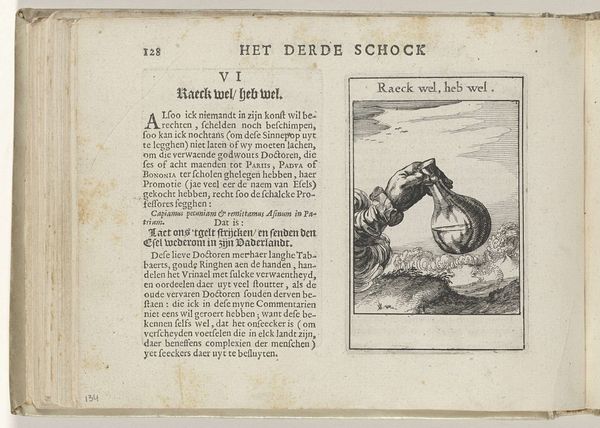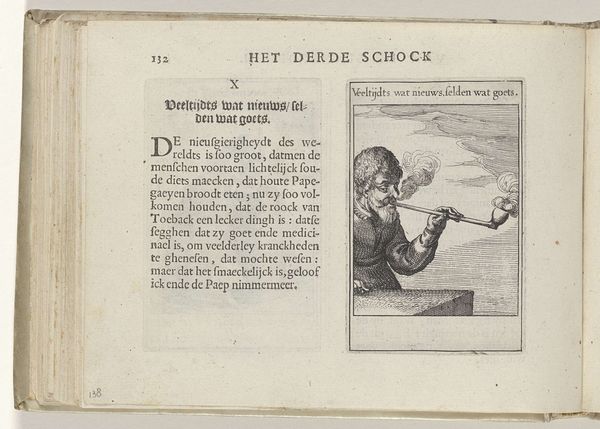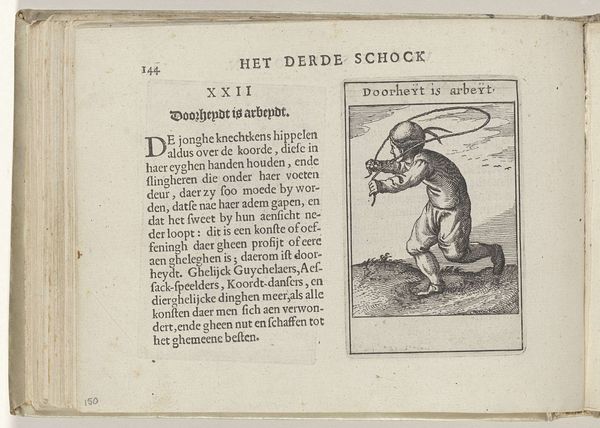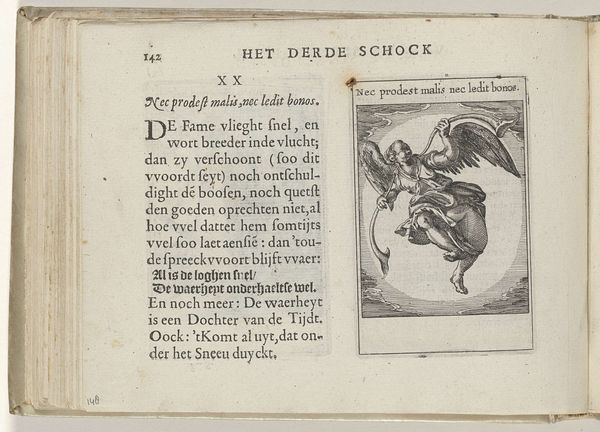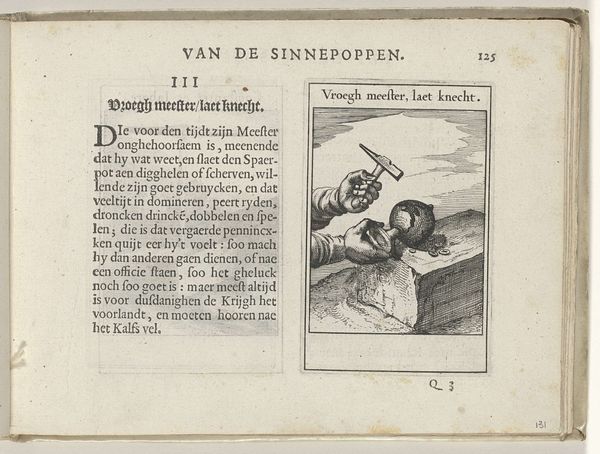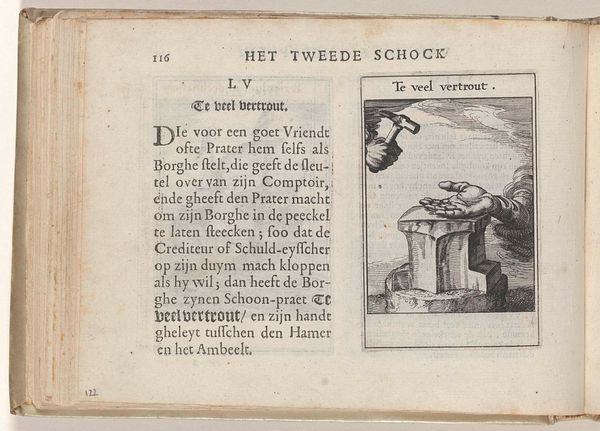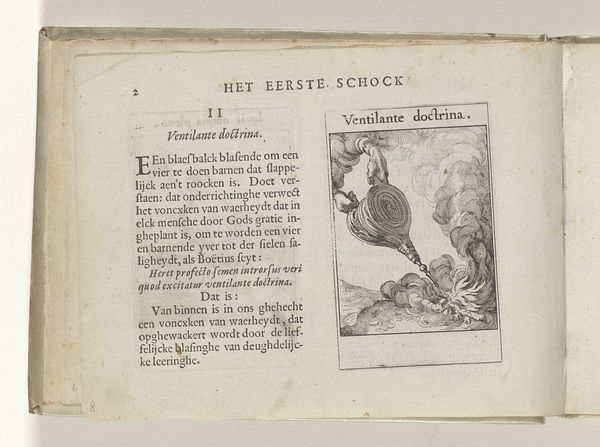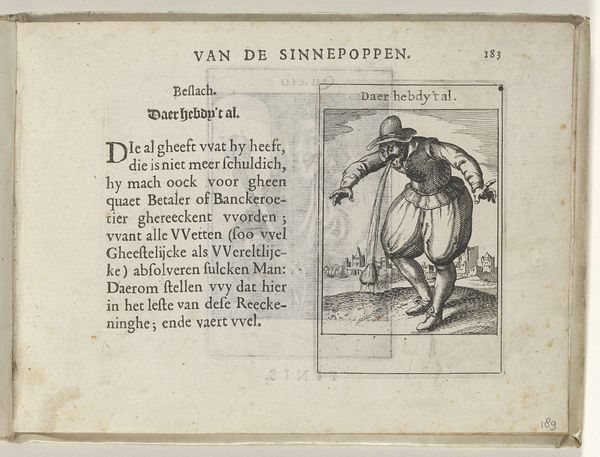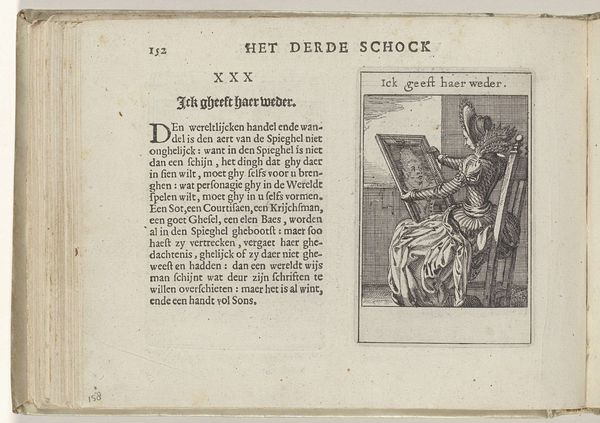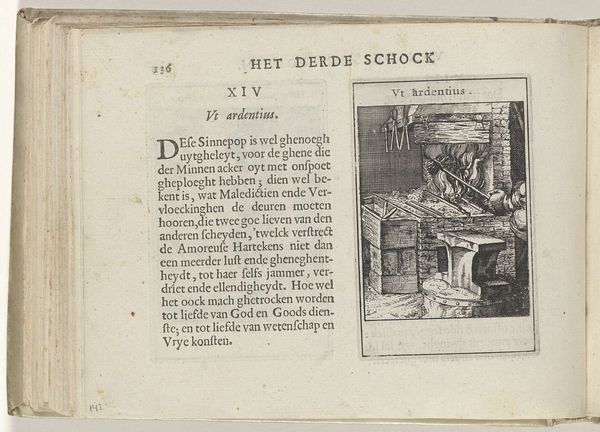
#
aged paper
#
toned paper
#
ink paper printed
#
sketch book
#
personal sketchbook
#
coloured pencil
#
sketchbook drawing
#
watercolour illustration
#
sketchbook art
#
watercolor
Dimensions: height 137 mm, width 188 mm, height 95 mm, width 60 mm
Copyright: Rijks Museum: Open Domain
Curator: Looking at this page from Roemer Visscher's "LVIII 't Isser niet in, en 't komter uyt" dated 1614, one is struck by its allegorical illustration juxtaposed with its poetic text. The work is housed at the Rijksmuseum. Editor: The monochrome image has an immediate rawness and energy to it; the dynamism captured within a square makes it hard to turn away. The lack of color focuses the viewer’s attention directly onto form. Curator: Precisely, let's delve into those forms. The focal point is undoubtedly the two hands, caught mid-action. One is scattering particles while the other seems to contain a source. This use of hands as symbols of labor and dissemination speaks to wider humanist values and reflects how industry could have been considered in this time. Editor: And isn’t it striking how the cloud formations both frame and emerge from those hands? They’re practically extensions of the body. It’s as if the human action of sowing and scattering becomes one with the natural forces and larger elements. The movement inherent in that formation leads the eye to the left of the frame towards a printed block of lettering, as it if it were part of the weather front of knowledge. Curator: It certainly guides our reading of the imagery! The very inscription over the visual element repeats in the text "t'Isser niet in, en 't komter uyt" It seems that even when nothing is available for your to consume in its complete state, you are still left with an abundance through its deconstruction and output into the wider world. There is very clever symbology and interweaving of wordplay going on to fully communicate this idea. Editor: It all culminates in a complex consideration, not just of labor but of knowledge dissemination. As an aesthetic object, it cleverly draws you into the philosophy via clean lines, dynamic form and a compelling narrative quality. Curator: Indeed, it encourages an engagement, demanding to see, explore and examine what is in the frame but also to think deeply. A piece so pregnant with intellectual substance continues to inspire consideration centuries later. Editor: Yes, I agree, it feels like a pertinent encapsulation of artistic philosophy on the page.
Comments
No comments
Be the first to comment and join the conversation on the ultimate creative platform.


